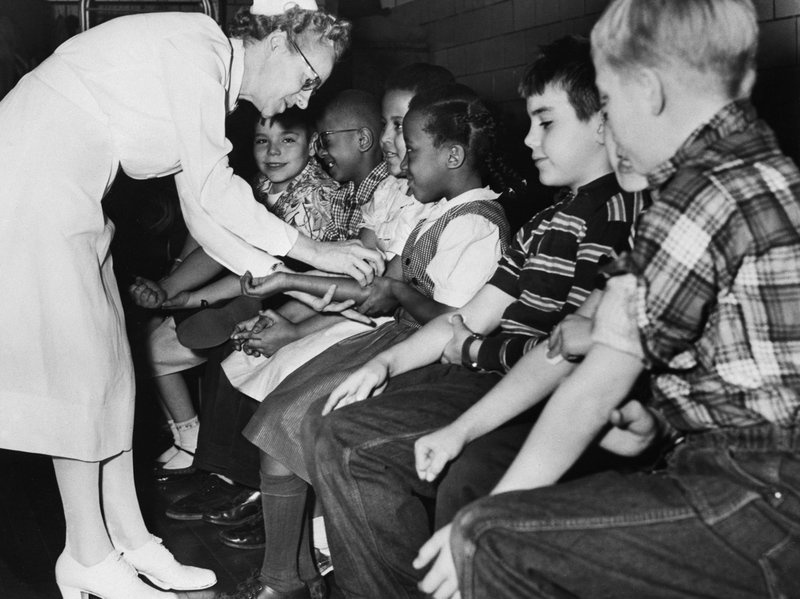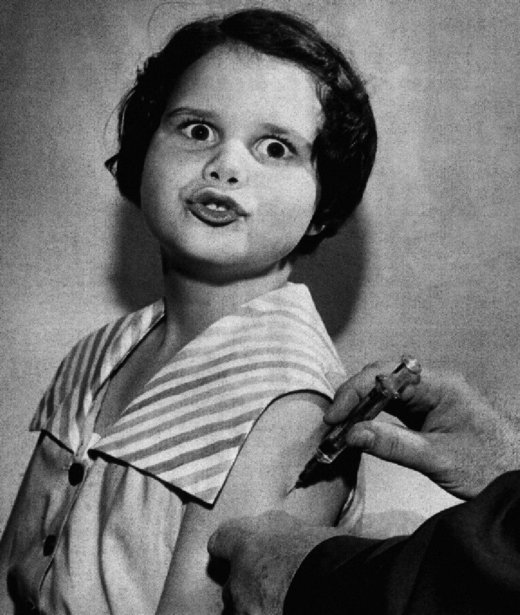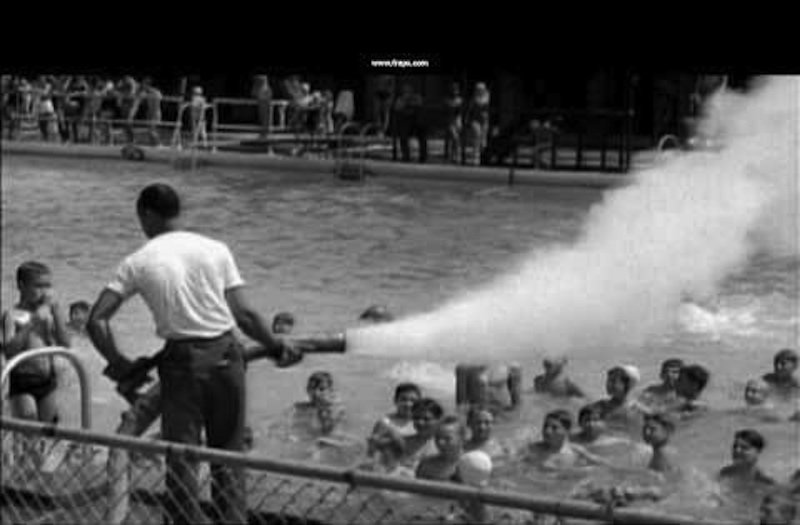Those who understand the human toll of the DDT (Dichloro-diphenyl-trichloroethane) fumigations during 1946-1972. Those who understand the human tragedy of DES (Diethylstilbestrol) given to pregnant women during 1938-1971. Those who understand the human horror of using Thalidomide to alleviate morning sickness in pregnant women beginning in 1957. Those who understand the countless and ongoing recalls of prescription drugs such as Vioxx that kill or maim hundreds of thousands of patients.
And finally, those who understand that the so-called "experts" in whom we're supposed to confide and trust have consistently gotten their wonderful "science" dead wrong. Let me give you a short history lesson.
Beginning in 1946, the US government conducted a nationwide mass fumigation campaign using the extremely toxic chemical DDT. The goal was to exterminate mosquitoes, which were believed to be spreading polio. As the DDT campaign proceeded, the incidence of polio began to noticeably rise. DDT fumigation in the US reached its peak in 1951. Polio reached its peak in 1952, with nearly 58,000 reported cases, in which 3,145 people died and 21,269 were left with disabling paralysis. In 1952, the DDT fumigations were subsiding. In 1953, polio cases were also subsiding at about the same rate. By 1953, the number of polio cases had dropped by nearly 40%.
During the 30 years before it was banned in 1972, a total of approximately 1,350,000,000 pounds of DDT was used in the US.
In 1954, medical researcher and virologist Jonas Salk came up with his inactivated injectable polio vaccine. That same year, the government redefined polio. According to Dr. Bernard Greenberg, head of the Department of Biostatistics of the University of North Carolina School of Public Health:
In order to qualify for classification as paralytic poliomyelitis, the patient had to exhibit paralytic symptoms for at least 60 days after the onset of the disease. Prior to 1954, the patient had to exhibit paralytic symptoms for only 24 hours. Laboratory confirmation and the presence of residual paralysis were not required. After 1954, residual paralysis was determined 10 to 20 days and again 50 to 70 days after the onset of the disease. This change in definition meant that in 1955 we started reporting a new disease, namely, paralytic poliomyelitis with a longer lasting paralysis.In other words, under the new definition of polio, thousands of cases which would have previously been counted as polio would no longer be counted as polio. The change in the definition laid the groundwork for creating the impression that the Salk vaccine was effective. It was kind of like a golfer being given a stroke handicap, or when you spot someone points in a basketball game.

In 1960, a scientist at the National Institutes of Health (NIH) named Bernice Eddy discovered a wild virus designated SV40 (simian virus 40) which had contaminated the Salk vaccine. In testimony given by Barbara Loe Fisher before the US House of Representatives' Subcommittee on Human Rights and Wellness, Fisher said:
It was in 1960 that an NIH scientist named Bernice Eddy discovered that rhesus monkey kidney cells used to make the Salk polio vaccine and experimental oral polio vaccines could cause cancer when injected into lab animals. Later that year the cancer-causing virus in the rhesus monkey kidney cells was identified as SV40 or simian virus 40, the 40th monkey virus to be discovered. (Shorter, e. 1987. The Health Century) Sadly, the American people were not told the truth about this in 1960. The SV40 contaminated stocks of Salk polio vaccine were never withdrawn from the market but continued to be given to American children until early 1963 with full knowledge of federal health agencies. Between 1955 and early 1963, nearly 100 million American children had been given polio vaccine contaminated with the monkey virus, SV40.
Merck microbiologist and famed vaccine developer Maurice Hilleman also detected SV40 in 1960, and he was concerned. SV40 had contaminated both the Salk vaccine and the oral polio vaccine (OPV) being developed by Albert Sabin. The OPV had been undergoing human trial testing since 1957 and would ultimately be distributed in 1962. In a video interview (start at 6:25), Hilleman can be heard saying:
So anyway I went down and talked to [Albert Sabin], and he said well, why are you concerned about it? Well, I said "I'll tell you what, I have a feeling in my bones that this [SV40] virus is different, I don't know why to tell you this, but I just think this virus will have some long term effect." And he said what? And I said, "cancer." I said Albert, you probably think I'm nuts, but I just have that feeling. Well, in the meantime, we had this virus and put it into monkeys and into hamsters. So we had this meeting, and that was sort of the topic of the day, and the jokes that were going around were that "gee, we would win the Olympics because the Russians would all be loaded down with tumors."Asked why the information about SV40 did not make it into the newspapers at the time, Hilleman answered:
Well, I guess it did, I don't remember. We had no press release on it. Obviously, you don't go out, this is a scientific affair within the scientific community... but, anyway we knew it was in our seed stock from making vaccines. That virus, you see, is one in 10,000 particles, is not inactivated by formaldehyde. It was good science at the time because that is what you did... you didn't worry about these wild viruses. So then the next thing you know... three, four weeks after that we found that there were tumors popping up out of these hamsters.So in summary, the US government decided to try and wipe out the scourge of polio by fumigating the country with more than one billion pounds of DDT, which ended up actually causing the polio epidemic of the 1940s and 1950s. Hundreds of thousands of people died or suffered greatly. But the government misdiagnosed the cause of the epidemic, and so it moved to vaccinate nearly two-thirds of the population — about a hundred million people — and many more around the world with vaccines that actually caused paralysis in tens of thousands of people and were contaminated with a wild monkey virus found to produce cancer.
We may never know for sure whether SV40 is one of the main contributors to the steady rise in cancer rates in the US during the past half century. But you have to wonder. If so, it would be a tragedy of historic proportions. Not only because of the human toll taken by the disease, but because it would all have been so unnecessary had the government opted against poisoning the country with DDT in the first place. One bad decision led to another bad decision, and on and on. It's as if government officials and bureaucrats have this special talent for being unable to see the forest for the trees. And we the people— the trusting people — always seem to be the ones who pay for it.
The end.





Comment: Also read Marco Caceres' excellent article about the ongoing vaccine debate: Current vaccine paradigm: Media struggles to pin stupid label on well-educated vaccine dissenters